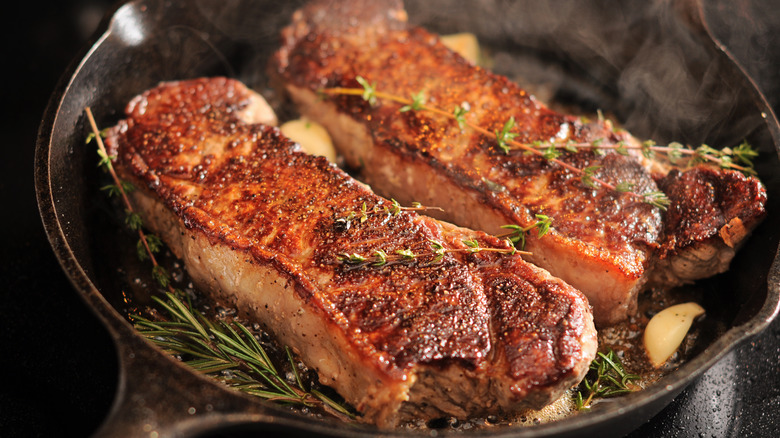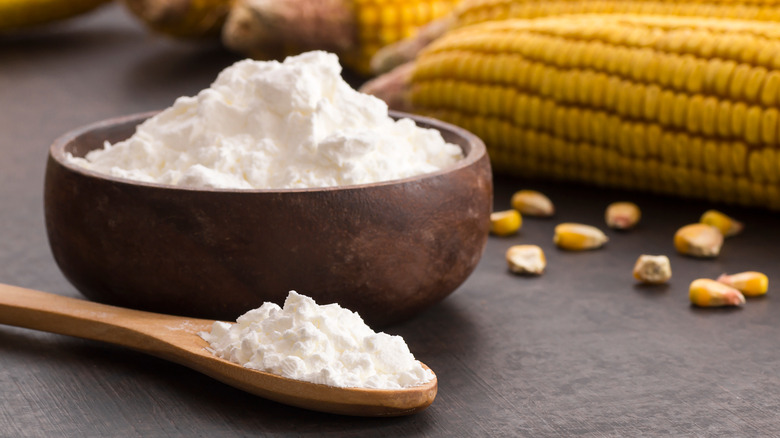Cornstarch Is The Secret To A Perfectly Seared Steak
It may be a humble ingredient, but cornstarch's ability to perfect steak is cause for acclaim. This pantry staple already runs the gamut — from being a vital thickening ingredient to an ideal egg substitute in baking. It should be no surprise, then, that it's the route to a superior steak texture. Sure, there are other ways, but all we're saying is before you try the other 17 tips for getting the perfect sear on your steak, try cornstarch.
The goal with using cornstarch is simple: Get a crispy crust by the end of the sear. To help with that, your steak should have a dry exterior since wet steaks will add excess moisture that prohibits a crispy crust. So grab some paper towels and dab your steak dry on both sides — even wipe the plate to ensure your steak isn't sitting in any water.
Then, rub the cornstarch, and some salt for seasoning, all over your steak. If using thick cuts like strip or ribeye steak, coat the sides, too; this is crucial since cornstarch doubles as a drying agent by absorbing the moisture from the meat. The cornstarch absorbs or attracts the moisture to form a gel, and the heat from the oil dehydrates it. Once it effectively dries the surface of your steak, cornstarch adjusts roles dexterously to lend it a crispy crust after searing.
How amylose in cornstarch aids to sear steak
Cornstarch is the ideal starch to lend your steak a crispy crust because, like other starches, it contains a starch molecule called amylose. Amylose is significant since it makes up 20% to 25% of starch, and the more amylose a starch contains, the better it performs when creating a crispy crust. While tapioca and potato starch contain 17 and 22% amylose, respectively, cornstarch contains 25%, making it a top contender for the crisping role. During contact with heat, the amylose molecules separate and let moisture escape and, as the moisture does so, amylose molecules settle rigidly into a brittle, porous crust that's crispy.
But it's not just the high amylose content that makes cornstarch the best crisping candidate. If that were the case, we'd settle for flour, which contains around 25% amylose. But you'd need more flour to coat your steak than the cornstarch called for, which leads to a thicker, more chewy crust. The fine texture of cornstarch makes it light enough to coat without adding much weight or chewiness. This is why we'll toss chickpeas in cornstarch before air-frying them, or use cornstarch for extra crispy french fried instead of flour. The cornstarch forms a thin layer that remains light and turns perfectly crispy once heated, and you can witness it with your next batch of seared steak.

